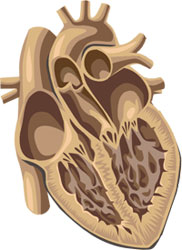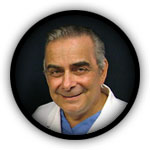A couple months ago I was invited to speak before the Anderson School of Business at UCLA about entrepreneurship, and I was able to talk about the diversity experienced in the multiple careers I’ve held since receiving my Doctor of Medicine degree from the Medical College of Virginia. So from time to time I’ll share some of these personal tidbits that I spoke to the Anderson School about so you can learn more about me.
I was encouraged by the feedback I received after posting about my short-lived farming career, so I’ll continue to post these as long as there’s an interest. For those of you who do not know much about my background or Dr. Pak’s background in various fields, you can find those here. So without further ado…
 The Intra-Aortic Balloon Pump:
The Intra-Aortic Balloon Pump:
In medical school, I was fortunate to find a number of faculty who stimulated the inquisitive mind. I developed an interest while I took a job on the inhalation therapy team and the university hospital. I worked nights and was usually the first person to be called when a patient went into extremis or had a cardiac arrest. I quickly became an expert on cardiac resuscitation. I wondered why some of the patients survived and some did not, so I set up experiments, first in the VA hospital (under Dr. Yale Zimberg) where I started to develop cardiac pumps and then eventually in the research lab of the cardiac surgeon, Dr. Richard Lower. The dean of the school of medicine eventually funded my projects. That got me to eventually work at the University of Minnesota under the famous surgeon Dr. C.W. Lillehei, the father of open-heart surgery. Funds for my ideas eventually came from an endowment fund under Dr. Lillehei’s trust and when I moved from Minnesota to Cornell Medical Center, I eventually came up with the first commercial bedside assist pump, the Intra-Aortic Balloon Pump (see: demo video). The medical cardiology community initially opposed the application of the technology, so the only patients I had a chance to work on were those patients who would not come off of the heart lung machine after cardiac surgery. Dr. Lillehei was clearly my sponsor and not only paid for this work, but encouraged me in developing further improvements. I believe that cardiologists were intimidated by the technology, particularly because some minor surgery was required in the leg to insert the balloon, something that in those days cardiologists were averse to.
I introduced the technology in January, 1969 to about 700 cardiologists. Dr. Lillehei was an invited guest speaker along with 4 other famous doctors — Dr. Denton Cooley, Texas Heart Institute; Dr. Michael DeBakey, Texas Methodist Hospital; Dr. Kaulf, inventor of the artificial kidney; and Dr. Frank Hastings, Director of the National Heart Institute. It is said that serendipity determines events and this was certainly the case when Dr. Lillehei asked me to substitute for him as he had a family event that would take him out of town. He also informed me that I could not use slides since this was a luncheon and there was no audio-visual equipment there. So confronted with being a 27 year old nobody and sitting amongst some of the most famous people in medicine, I had to develop a plan that would not put the audience to sleep. I figured that the technology was cool and I knew that sex sells, so I got a beautiful woman, wired her chest with cardiac leads, put her in a tight nurse’s uniform with some cleavage showing and connected her to the Intra-Aortic Balloon Pump that she then wheeled down between the luncheon tables to the podium. When she was plugged into the electric output, her heart rate was running at 160 beats per minute and scared to death, she held this throbbing balloon in her hand as it followed her heart rate. I got the attention of the entire audience and a wonderful round of applause. I told the audience that the pump would be available for demonstration after the luncheon. I joined the people that were at a booth setup to show the system and there was Michael DeBakey and eventually Denton Cooley who offered me the opportunity to name it after them. DeBakey’s egos was clearly evident.
I took almost 10 years for the technology to be incorporated into the average cardiologist’s skills and they eventually took it into their intensive care units. Now, every cardiac ICU in the world has one or more of these pumps which, I am sure, still saves thousands of lives every year. Although I left that field long ago, I do feel good about that medical contribution. But on a personal level, the best part of what this provided me was that I married the model I used in front of that luncheon group and got 4 wonderful children out of that union.

 While I am fully trained in hair transplant surgery by Dr. Rassman and it has been my primary practice over the years, I am also trained in emergency medicine. As such, I keep up my skills as an emergency physician at local hospitals in the community a few times a month. This gives me a unique perspective in my professional and personal life. I see the best and worst in people.
While I am fully trained in hair transplant surgery by Dr. Rassman and it has been my primary practice over the years, I am also trained in emergency medicine. As such, I keep up my skills as an emergency physician at local hospitals in the community a few times a month. This gives me a unique perspective in my professional and personal life. I see the best and worst in people.
 This isn’t a hair transplant related post, but it is a trip down memory lane for me. Allow me to indulge myself…
This isn’t a hair transplant related post, but it is a trip down memory lane for me. Allow me to indulge myself…